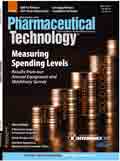Toward Expanding Understanding
A revised book on process analytical technology could be valuable to novices and experts.
Process analytical technology (PAT) is a fairly recent innovation within the pharmaceutical industry. It has been used for a lot longer in other industries (e.g., the chemical industry). The second edition of Process Analytical Technology: Spectroscopic Tools and Implementation Strategies for the Chemical and Pharmaceutical Industries contains many revisions and some additions. Notably, the editor has added chapters on sampling, nuclear magnetic resonance, fluorescence, and acoustic chemometrics. These changes and additions reflect the developments and progress that have taken place in the five years since the publication of the first edition.
The book contains a wealth of information, and all chapters have useful lists of references. The glossary of terms should be particularly useful to beginners in the field. As editor Katherine A. Bakeev points out in her preface, PAT continues to develop, and this book is intended as a timely update. The book is ostensibly written from a spectroscopist's viewpoint. However, that does not detract from its utility or substance because many PAT methodologies use a form of spectroscopy.

Process Analytical Technology: Spectroscopic Tools and Implementation Strategies for the Chemical and Pharmaceutical Industries, 2nd ed., Katherine A. Bakeev, Ed., Wiley, Hoboken, NJ, 2010, 576 pp, ISBN: 978-0470722077
The book works on at least two levels. It is a useful overview of PAT for a beginner in the field, and it also has the detail, particularly through the cited references, to provide the experienced reader with sufficient information to meet his or her technical needs.
From this reviewer's perspective (that of a formulation scientist with experience of continuous chemical processing), three chapters stood out as the most important: those that focused on sampling, chemometrics, and applications in the pharmaceutical industry. The chapter on sampling is an excellent addition to the book. Process sampling is often the weak link in process control, and this chapter is a timely and useful reminder that sampling must be properly addressed if we are to gain the proper benefits of PAT.
The chapter about chemometrics will be heavy going for readers who do not have a good understanding of statistical theory, but it clearly illustrates the point that chemometrics requires a combination of statistical and chemical (or process) understanding. Future PAT scientists and engineers will need to be conversant with their science, technologies, and the requisite statistical methods.
The majority of the examples cited in the book concern chemical processing, and many come from outside the pharmaceutical area. This situation is inevitable, given that the chemical industry has been using PAT for longer than the pharmaceutical industry has. However, the discussion of PAT as it relates to pharmaceutical finished-product applications was perhaps more limited than it should have been. Again, this apparent shortcoming may be a consequence of the comparatively brief time that PAT has been used in such applications. However, one of the reasons for the introduction of FDA's Pharmaceutical Quality for the 21st Century initiative was to bring increased robustness to pharmaceutical finished-product manufacture.
A few minor flaws marred the book. Poor proofreading in certain sections detracted from the book's overall impression. In addition, "Chapter 8: Near-Infrared Chemical Imaging for Product and Process Understanding," was originally submitted (according to the text) with colored figures and graphs. The book is printed in black and white, however, and it is difficult to follow some of the detailed discussion because it is not clear which shade of gray corresponds to which color, particularly in some figures.
The first two chapters of the book make the connection between PAT and quality by design (QbD). QbD establishes the context of PAT in commercial manufacturing. PAT can help to establish the necessary process and attribute understanding in the development phase.
For those interested in PAT, be they novices or experienced practitioners, this second edition of Bakeev's book is a worthwhile addition to the library. For those who own the first edition, it is still a worthwhile purchase because of its revisions and widened scope.
R. Christian Moreton, PhD, is vice-president of pharmaceutical sciences at Finnbrit Consulting, Waltham, MA, info@finnbrit.com. He also is a member of Pharmaceutiacl Technology's editorial advisory board.

Pharmaceutical Tariffs Are Imminent: How Industry is Bracing for Impact
April 16th 2025On April 14, 2025, the Trump Administration launched a national security-driven investigation into pharmaceuticals, a move that will likely result in tariffs being placed on pharmaceutical drugs, ingredients, and other components that are imported from outside of the United States.